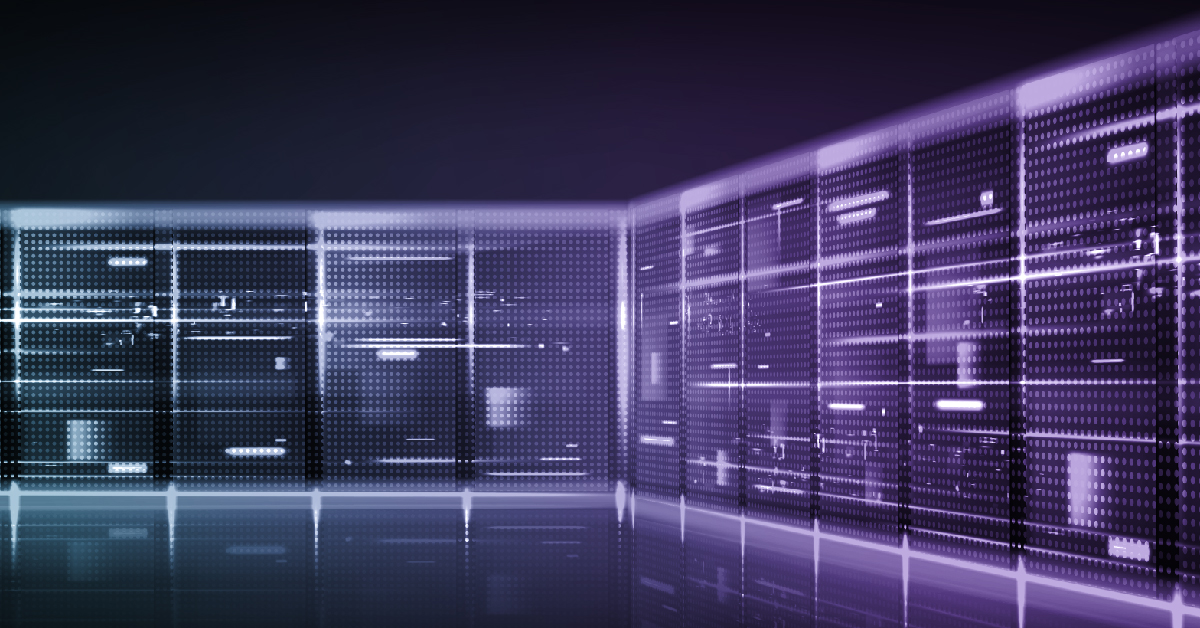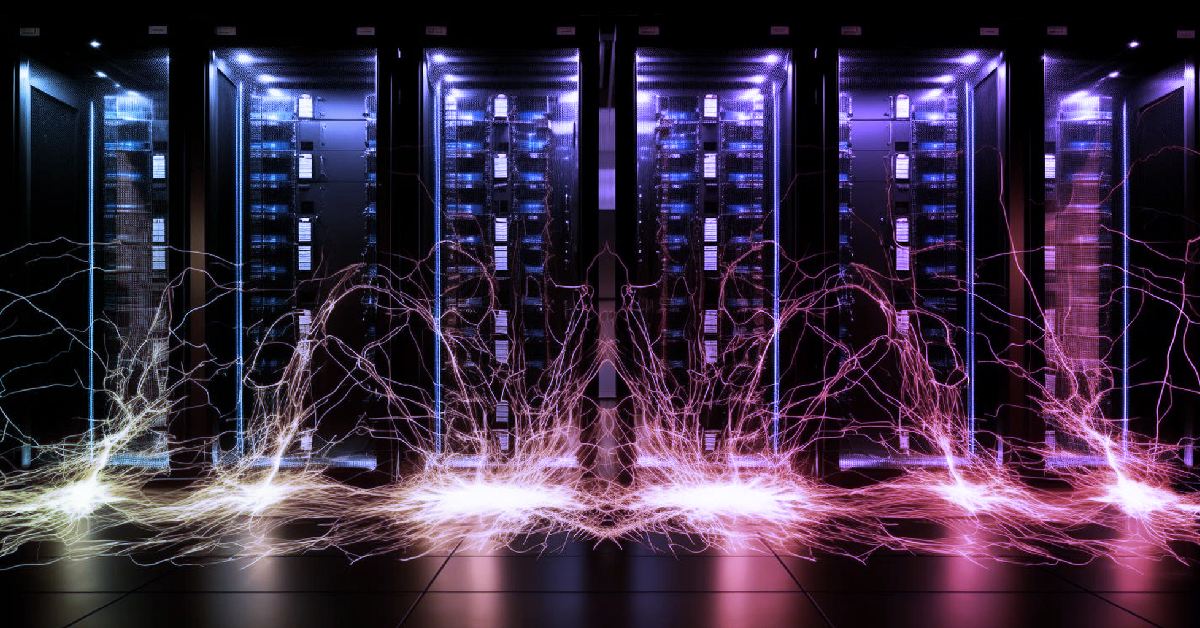As digital operations continue to expand, data centers AI are under increasing pressure to manage their vast Energy Consumption Using AI. The global demand for cloud computing and data storage is skyrocketing, leading to higher electricity usage and increased operational costs.
At the same time, the environmental impact of data centers—due to their carbon footprint—has come into sharper focus. In this context, Artificial Intelligence (AI) has emerged as a key player in reducing energy consumption, optimizing operations, and improving overall energy efficiency.
This article of Danacloud explores how AI is transforming energy management and energy consumption in data centers, reducing costs, and paving the way for more sustainable practices.
Here’s a table summarizing how AI optimizes data center energy efficiency, based on the provided text:
| Area of Optimization | How AI Works | Example in Action | Efficiency Highlight/Benefit |
|---|---|---|---|
| Predictive Maintenance | AI analyzes historical data and operational metrics to predict equipment failures before they occur. | AI monitors cooling systems for anomalies. If a unit works harder than usual, it sends an alert for maintenance. | Minimizes energy waste from malfunctioning equipment, reduces downtime and repair costs. |
| Dynamic Cooling Management | AI adjusts cooling levels dynamically based on real-time data (workload and temperature in server rooms). | AI controls air conditioning based on real-time workload, saving up to 30% in cooling costs. | Reduces wasted energy from overcooling or undercooling, optimizes cooling usage. |
| Energy Consumption Forecasting | AI uses historical data, weather patterns, and operational metrics to predict future energy demand. | A data center uses AI to forecast weekly energy needs and adjusts cooling/power consumption accordingly. | Avoids high-cost energy purchases during peak periods, reduces risk of overloading power grids. |
| Smart Energy Storage Management | AI determines optimal times to charge and discharge stored energy (e.g., batteries). | Large data centers use AI to manage battery storage, reducing energy costs by 20-25%. | Balances demand, minimizes costs by using stored energy during peak hours and charging during off-peak hours. |
| Integrating Renewable Energy Sources | AI forecasts renewable energy production (solar, wind) and adjusts data center operations accordingly. | In areas with high solar/wind availability, AI helps data centers automatically integrate renewable energy during favorable conditions. | Reduces reliance on non-renewable sources, promotes greener energy usage. |
Understanding AI Energy Consumption in Data Centers
While AI offers considerable energy-saving benefits, it also consumes power. AI algorithms, especially those handling large datasets or running complex simulations, require significant computational resources. However, the key to utilizing AI effectively in data centers lies in striking a balance. While AI systems do require energy for processing, the goal is to ensure that AI’s application leads to net energy savings through more efficient operations.
- Computational Demands: AI technologies, including machine learning models, require processing power. Training complex models or running intensive operations can create an additional energy load.
- Efficiency Gains: By optimizing systems, AI can automate processes, reducing waste, and ensuring better use of available power.
By carefully balancing these aspects, data centers can leverage AI to improve energy efficiency without unnecessarily increasing their overall power demands.
Read more: What is an enterprise data center?
How AI Optimizes Data Center Energy Efficiency?
Data centers consume vast amounts of energy, and AI is making it possible to optimize usage across several key areas. Below are some of the critical methods through which AI is enhancing energy management. Also, to help you recognize and enact the newest technical improvements in Data Center optimization, we have brought practical examples and efficiency highlights as well:
-
Predictive Maintenance for Data Centers
Types of Data center in systems, especially cooling units and electrical components, are prone to wear and tear. This can lead to inefficiencies or even breakdowns that waste energy. Predictive maintenance, powered by AI, uses sensors and machine learning algorithms to predict failures before they occur, allowing for timely interventions.
- How It Works: AI analyzes historical data from equipment and operational metrics to spot patterns that precede failure. It can forecast when a machine might need servicing, reducing unexpected downtimes and the resulting energy spikes when systems malfunction.
- Example in Action: AI monitors cooling systems for anomalies. If a cooling unit is working harder than usual (indicating inefficiency), the system sends an alert, prompting maintenance before the system fails and energy is wasted.
Therefore, with this shift from reactive to proactive maintenance, AI not only saves on repair costs but also minimizes energy consumption by ensuring that equipment operates at peak efficiency.
If you want to know about data center tiers come here.
-
Dynamic Cooling Management
The cooling system represents one of the largest energy expenses in a data center—sometimes up to 40% of total power consumption. AI makes cooling systems smarter by adjusting them dynamically based on real-time data. AI can modulate the temperature across different parts of the data center, ensuring that cooling is used only when necessary.
- How It works: Using AI, data centers can adjust cooling levels based on the actual load and temperature in different server rooms. By continuously analyzing these conditions, AI ensures cooling is used efficiently, reducing wasted energy from overcooling or undercooling.
- Example in Action: Some large data centers have integrated AI to control air conditioning systems based on real-time workload conditions, saving up to 30% in cooling costs.
Taken from this perspective, dynamic cooling management is one of the most effective AI-driven solutions in data centers, addressing one of the most significant energy drains.
Read more: Data Center Electromagnetic Waves
-
Energy Consumption Forecasting
Forecasting energy consumption is crucial for planning and managing power usage effectively. AI leverages historical data, weather patterns, and operational metrics to predict future energy demand accurately. What we have witnessed so far is this new ability allows data centers to fine-tune their energy purchasing and reduce waste.
- How It Works: AI uses predictive algorithms to forecast when energy demand will peak, allowing data centers to prepare and adjust their usage accordingly. This helps avoid high-cost energy purchases during peak periods, leading to cost savings afterward.
- Example in Action:: A data center could use AI to forecast its energy needs for the upcoming week, adjusting its cooling or power consumption based on expected demand, ensuring it only uses energy when necessary.
In a nutshell, accurate energy forecasting also reduces the risk of overloading power grids during peak times, making the operation smoother and more cost-effective for every user.
-
Smart Energy Storage Management
Energy storage solutions like batteries are increasingly popular in data centers, especially those looking to reduce reliance on the grid. AI plays a crucial role in ensuring that these energy storage systems are used efficiently. By managing when to charge and when to discharge stored energy, AI helps balance demand and minimize costs.
- How It Works: AI can determine the optimal times for drawing power from energy storage systems, ensuring that energy is not wasted. For example, AI might decide to charge batteries during off-peak hours when energy is cheaper and use stored power during peak hours to avoid high electricity rates.
- Example in Action: Large-scale data centers have employed AI to manage battery storage systems, effectively reducing their energy costs by 20-25% in certain cases.
This smart management of energy storage is a key step toward a more sustainable and cost-effective operation.
-
Integrating Renewable Energy Sources
Renewable energy adoption is growing in data centers, and AI is facilitating smoother data integrations. By helping data centers switch between renewable and traditional power sources based on availability and cost, AI has shown its strength again by ensuring a more reliable and green energy usage.
- How It Works: AI algorithms can forecast renewable energy production from sources like solar and wind, adjusting data center operations accordingly. For instance, on days with high solar output, AI may prioritize solar energy for power needs.
- Example in Action: In countries with abundant solar or wind power, AI helps data centers automatically integrate renewable energy during favorable conditions, lowering reliance on non-renewable sources.
Related article: What Is a Micro Data Center?
Reducing Data Center Electricity Expenses with AI
Electricity costs are one of the most significant operational expenses for data centers. AI helps minimize these costs through efficient energy management, predictive maintenance, and dynamic cooling. Here are some ways AI makes a direct impact on reducing energy-related expenses:
- Efficient Cooling: AI-driven cooling systems are responsive, ensuring energy is used only when needed and reducing the risk of overcooling or undercooling.
- Predictive Maintenance: By addressing issues before they lead to failure, AI reduces the need for expensive repairs and keeps systems running efficiently, thus saving energy.
- Energy Forecasting: AI’s accurate energy consumption forecasts allow for smarter purchasing decisions, reducing unnecessary spending on energy.
As data centers continue to grow in both size and importance, their energy consumption remains a critical challenge. However, with the integration of AI technologies, data centers are becoming more efficient, sustainable, and cost-effective. From predictive maintenance to dynamic cooling management and energy forecasting, AI offers a comprehensive suite of tools that help optimize energy usage, reduce operational costs, and minimize environmental impact.
By embracing these advanced AI-driven solutions, data centers not only improve their bottom line but also contribute to a greener future. The path forward is clear: AI is not just a tool for operational efficiency but a key enabler of a sustainable, energy-conscious data center industry.
The Path Forward: Embracing AI for Sustainable Data Center Models
The future of data center energy consumption is undoubtedly linked to AI. With the need to reduce costs and address environmental concerns, AI provides a practical and scalable solution. From optimizing cooling systems to managing renewable energy resources, AI’s role in energy management will continue to grow, ensuring that data centers can meet increasing demands while minimizing their carbon footprint.
Data centers that embrace AI now will be better positioned for a sustainable, cost-efficient future, with enhanced energy savings and reduced environmental impact. This transformation is not just an operational necessity; it’s a key part of the larger push toward smarter, greener industries worldwide.



